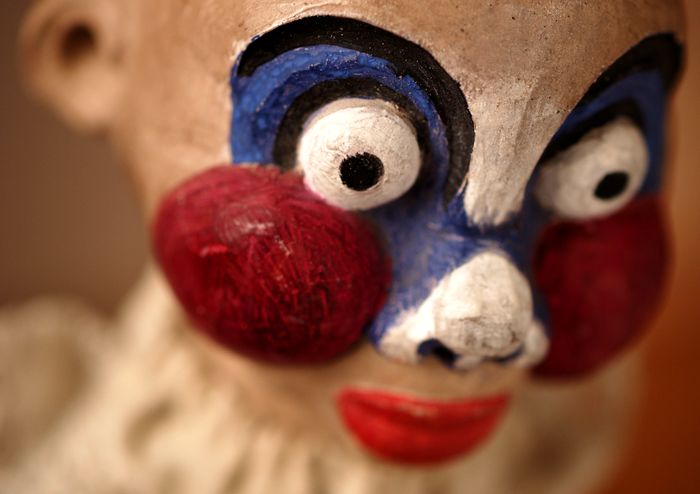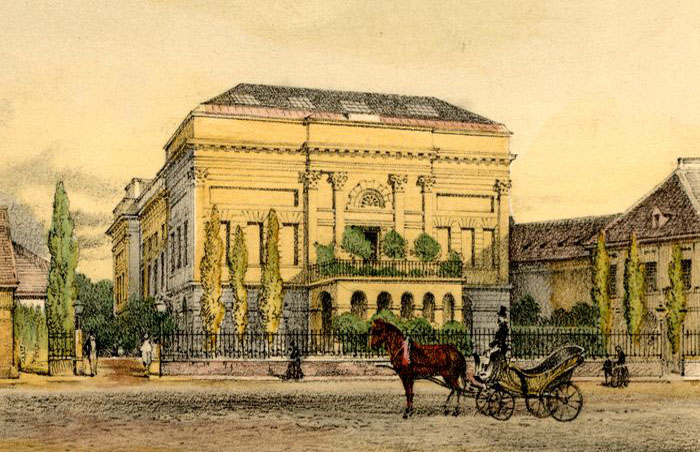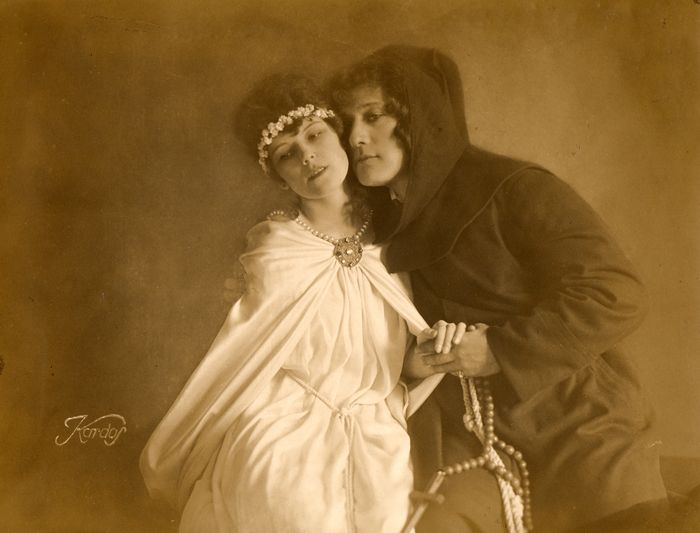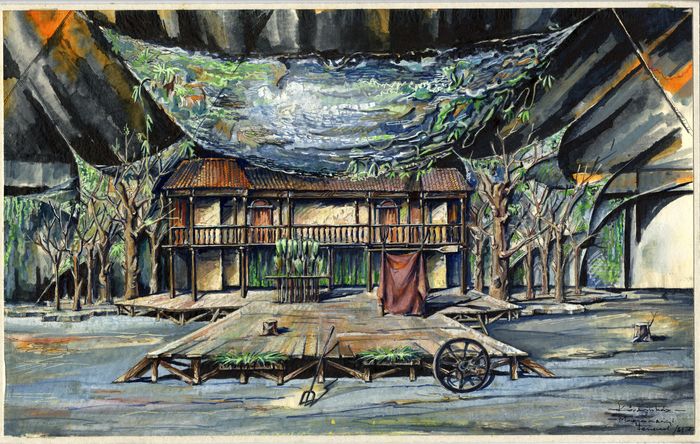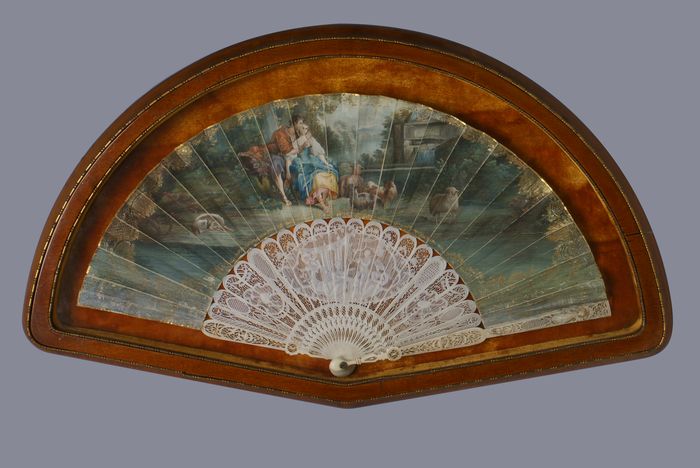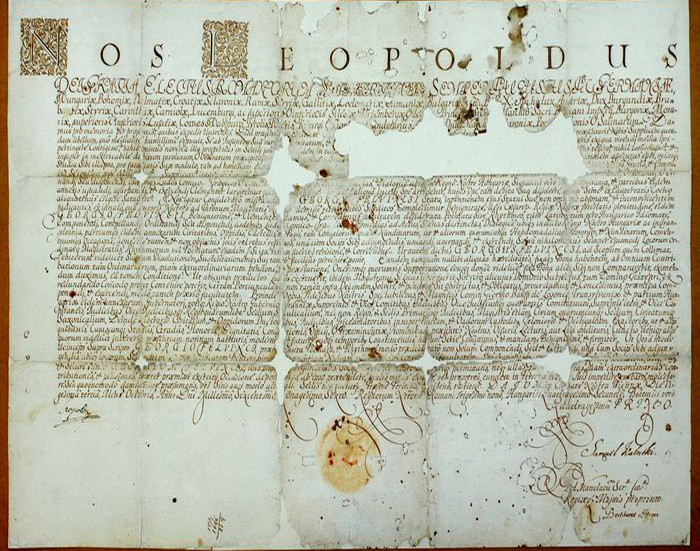
Our collections
This collection stores more than 6400 recordings, collecting mostly Hungarian performances, documentaries, operas and the most important film adaptations of plays. The collection also has a significant international part. The Audio Archive preserves many sound records of older performances, interviews with theatre artists, LP’s and magnetic tapes with poetry recitals and theatre songs.
This is the only public collection in Hungary which undertook the systematic collection and documentation of puppet theatres in Hungary. The collection was founded by Hedvig Belitshka-Scholz in 1970. Today it comprises more than 2000 puppets and set design elements, from the marketplace puppetry of the 19th century to the avant-garde puppet characters. The oldest puppets in the collection come from the Hincz family of puppeteers. The puppet player dynasty, which started performing from 1941 onwards in Hungary, travelling from one fair to another, decided to settle in the City Park (Városliget) in 1889, founding the First Hungarian Puppet Theatre. The puppets in our collection testify of the changes in programme and style along three generations of players and puppet makers. From 1910 onwards we have representatives of all important styles and makers: Lóránd Orbók, Béla Szokolay, Géza Blattner, Sándor A. Tóth with avant-garde and experimental puppets, the glove and shadow figures of Béla Büky, the rod puppets of István Árpád Rév, which use a specific moving technology, and many other artefacts belonging to the school puppetry movements. Beyond the puppets there are abundant other resources in the collection: fine arts, photos, manuscripts, small prints, video recordings.
Composed of almost 2,100 artefacts this is the most colourful collections of our museum. Unique in the country, it unites the objects which used to belong to the most important figures of the Hungarian theatre life. Furniture, carpets, glasses, perfumes, cigarette boxes, items of clothing and many more items serving very different purposes. These enable researchers to get a more complete picture of a given actor or theatre personality, of his/her environment, taste and habits.
More than half a million photos in this collection show the history of Hungarian theatre from the last decades of the 19th century. A constant raise in the social prestige of actors is shown by the fact that the most famous studio photographers of the era decided to immortalize the theatre players. The biggest unit of our Photo Archive comprises the photos of Ella Wellesz, who photographed almost all the theatre premieres from the 1930’s to the 1970’s. The Hungarian theatre performances, the notable events of theatre history are primarily documented by the photographers of the Hungarian Photo and Hungarian News Agency: Tamás Farkas, Éva Keleti, Béla Ilovszky, Éva Horvát, Imre Földi. The collection is being constantly digitized, today we have about 30,000 photos accessible in digital format online from 1860 to 1990.
Before the invention of photography it was mainly paintings that immortalized theatre artists, while they also evoked some elements of scenography. This collection, which comprizes about 4800 items, is primarily important as a research resource, giving a comprehensive overview of the well known and less known personalities of the Hungarian stage from the beginning of the 19th century until today.
This collection preserves handwritten rehearsal copies, diplomas, prompter’s copies, handwritten and printed scores. The most cohesive part of the collection is the archive of the National Theatre Academy, time tables, minutes from the teachers’ meetings (1880-1940), degrees, financial documents, telling the rich history of the first official theatre education establishment in Hungary. Another important set of documents present the ones documenting the financial management from the 1840’s and 1850’s. Also of great importance is the documentation of the Művész Színház (Artistic Theatre) led by Zoltán Várkonyi and the documents of the SQUAT Theatre from New York, mostly in English. We also preserve early 19th century manuscripts from the life of the travelling company of István Balog.
HTMI hosts the largest theatre library in the country. The collection has two parts: a specialized library and a press archive. The library has over 80,000 volumes. A partial digitization of the collection started within the frame of special grants (NKA, MANDA). Another very important and often used source about performances from the past is our collection of press cuts: mostly reviews and interviews, but also many other theatre-related articles. This collection is frequented by both researchers and theatre makers, preparing for a new performance of a given play. We preserve over ten thousand folders of performance reviews organized along performances, authors and we also have a separate collection on theatre makers and playwrights, as well as performing arts institutions. Retrospective digitization of the press archive is also very intensive and, from 2007 onwards, we only collect articles in a digital format.
Set and costume designs, historical and contemporary costumes, props, stage design models etc. We have over seven thousand set and costume designs, the oldest of which are the Jesuit Stage Design from Sopron, which date back to the end of the 17th century, which offer a most unique insight into the visual characteristics of Baroque theatre. The biggest treasures of the costume collection are those worn by the most acclaimed Hungarian actors in hallmark performances of Hungarian theatre history. Actors like Mari Jászai, Emília Márkus, Gizi Bajor and Anna Tőkés, in different performances from the National Theatre. In the stage model collection we preserve the works of the most important Hungarian stage designers: Csaba Antal, Péter Horgas, Péter Donáth, Gábor Forrai, Miklós Fehér, Edit Zeke, Judit Csanádi, Anni Füzér or István Szlávik.
This collection was founded together with the Institute, today preserving over 70,000 items. This collection alone is a rich documentation of the colourful history of Hungarian theatre, both in present-day Hungary and the stages of the of the Hungarian theatres abroad. The materials from the National Theatre and Városi Színház are especially rich, as well as the posters and brochures of Hungarian performances abroad. The silk-printed playbills are one of the oldest items in this collection.
A systematic collection of dance resources started in the 1950’s in Hungary, but a comprehensive archive of the Association of Hungarian Dance Artists was only founded in the 1970’s. This archive was annexed to the Hungarian Theatre Institute in 1987. We have a library of dance-related books with 6000 volumes (both in Hungarian and foreign languages), over 10,000 dance videos which can be viewed on the premises, 60,000 catalogued performance and rehearsal photos and portraits of different dance artists. Also here, we have an extensive collection of press materials on companies, artists, venues, festivals, contests and guest performances. Among the 5,000 items in the poster collection one can discover several rarities. The digital catalogue of the Dance Archive has about 30,000 entries.
The collection, consisting of over 5,000 items, preserves materials on the venues of Hungarian theatre: blueprints, auditorium layouts, photos (mainly on postcards), and drawings. The original blueprints – for instance the plans of the Opera House and the work of László Vágó – are preserved here and at the Theatre Collection of the National Széchenyi Library. The collection is supplemented by written resources.
Hungarian Theatre Museum and Institute (Országos Színháztörténeti Múzeum és Intézet), 1013 Budapest, Krisztina körút 57., +3613751184, oszmi@oszmi.hu


